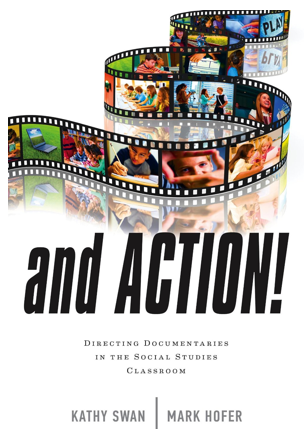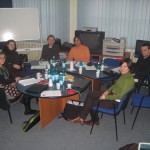
What does Information and Communication Literacies (ICL) look like when supporting a unit of study? We just completed an ICL project after collaborating with our Second Grade teacher on the “Family History” unit—the learning goals centered on helping students better understand timelines, family history, heritage, and geography.
We designed three lessons to incorporate research using the Britannica online database. The students used a handout (see below) to record information about one or more of their ancestor’s home countries. As we are an international school, many of our families have roots all over the globe. The students used Inspiration to communicate their findings via a diagram.
Students used ICL skills of:
- navigating an online database
- reading digital information
- taking notes
- downloading, saving, and naming images
- inserting images into Inspiration
- resizing and placing images using design skills
- saving and naming a document
- inserting an audio file into Inspiration
- searching the Inspiration library for applicable symbols to insert into the diagram
The project included extension activities for students who understood their ancestors more and could connect that knowledge to images. Thus students could add a voice file in their second language (Spanish or French), giving more background information about their ancestor(s). They could also search the Inspiration symbol (image) library for pictures connected to their ancestors’ backgrounds. It was interesting to see the abstract connection-making for students who knew, for example, that their relative was in the military, held a government position, was an author, was famous, etc.
__________________________________
Using the Britannica Online Database
Reading and Taking Notes for Your Family History Report
Your Name: __________________
Class: __________________
Ancestor’s Position in Your Family: (grandmother, father, uncle …) _____________________
___________________
Task: Read about your ancestor’s country in Britannica and write answers below. You can do two ancestors if you choose.
Country Name:
Capital City:
Language Spoken:
Population:
Go to “Articles & Media” to click “Full Article” to learn more about your ancestor’s country. Explore and read (listen). Use the space on the back of this paper to write any information that you find interesting.
____________________________
Second Lesson
Task: Inspiration
- Download the image of the map of your ancestor’s country
- Download the image of the flag of your ancestor’s country
- Download an image that shows a place in your country
- Insert images into Inspiration & connect them to the Name of your ancestor (center symbol)
Looking at the map(s), find the following and answer below:
Country 1 Country 2
Names of Bordering Countries:
Nearby Bodies of Water:
Names of Bordering Countries:
Nearby Bodies of Water:
____________________________
Third Lesson
Task: Inspiration
- Make connector arrows between the center symbol and your ancestor and each image.
- Choice Activity: What else do you know about your ancestor? Are there symbol images in the library that you could add to your diagram? If so, add them to your diagram and add connector arrows.
- Choice Activity: Use the audio recording tool in Inspiration to tell more information about your ancestor.
- Save your Inspiration file to the desktop.











